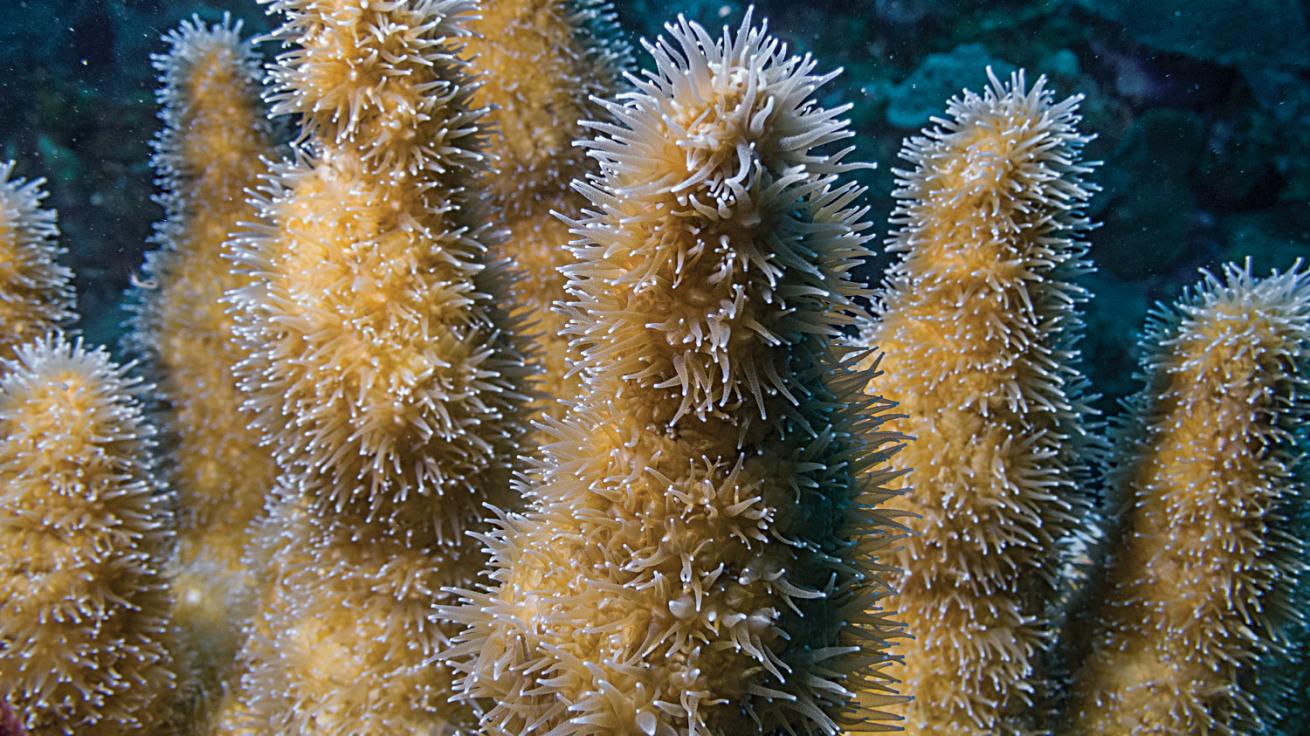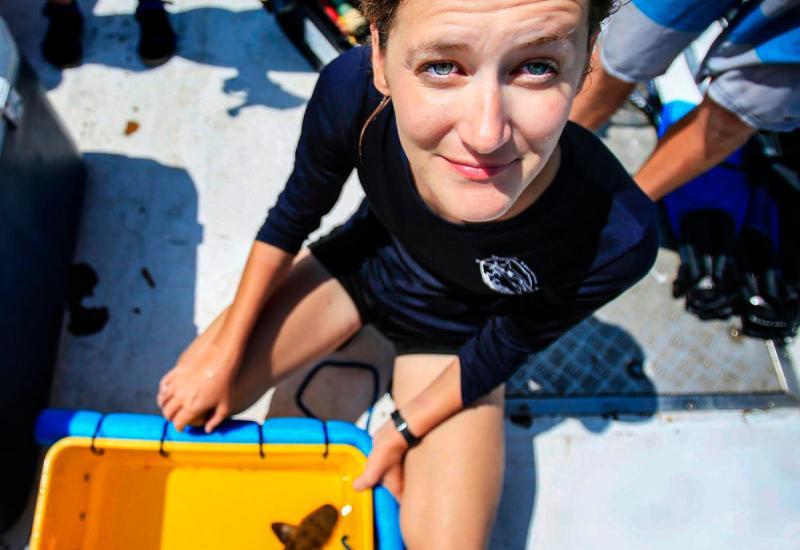How to Identify Pillar Coral

Nicole HelgasonDendrogyra cylindrus, AKA Pillar Coral.
Dendrogyra cylindrus is one of the rarest corals in the Caribbean and is listed as a threatened species under the Endangered Species Act. Dendrogyra colonies grow into pillars, spires or columns that can reach more than 6 feet tall — no wonder the common name for this coral is the Caribbean pillar coral.
One of the reasons Dendrogyra is so rare is that, in 30 years, very few — if any — juvenile colonies have been recorded. In 2015, Dr. Kristen Marhaver from the CARMABI institute in Curaçao observed spawning behavior and was able to successfully raise juvenile Dendrogyra cylindrus corals in a lab.
Dendrogyra is found in flat, sheltered locations, ranging from the southern tip of Florida down to Venezuela and Panama. Colonies have encrusting bases that spread across rocks, with tall spires growing upward from the base. Pillar corals are found in shallow reef habitats full of sunlight. They can be found in a current or nearshore, where waves stir up nutrients in the water. It is uncommon to find a pillar coral past 80 feet.
The skeleton of Dendrogyra has meandering valleys similar to the Meandrina (colonial stony) and Colpophyllia (boulder brain) corals. During the day, polyps are commonly extended to catch and feed on zooplankton in the water column, giving Dendrogyra a fuzzy appearance. When the polyps are retracted, the colony has a mazelike appearance and skeletal features.










